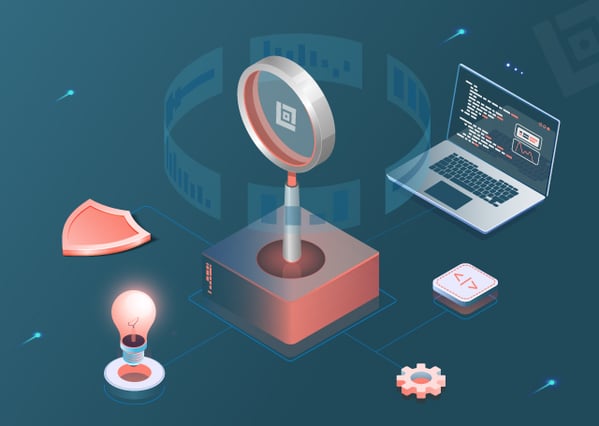
The vastness of the internet rests on the myriad of individual web applications that make up its practically endless network. The ease of access a user experiences and expects belies the multipoint complexity of the underlying web server, application server and database.
Pitching a new product into this balance between complexity and simplicity requires a profound commitment to software testing. You must account for every combination of user discovery, access and functionality—while protecting user information and providing an intuitive, rewarding experience.
It is almost impossible to deliver on all those fronts and maintain prompt release times without automating at least a substantial portion of your testing requirements.
The need for automation has given rise to a range of web application testing tools that promise speed and accuracy at a minimum cost of human intervention. The questions is: which tool is best for your product?
Choose the Right Web Application Testing Tool
Web applications need to undergo a barrage of tests to ensure that they will perform under the stresses and expectations of the market. Any web application testing tool you deploy will have to contribute to a range of tests, including:
- Functional testing
- Usability testing
- Interface testing
- Compatibility testing
- Performance testing
- Security testing
This list represents one of the most complicated test regimens any application must complete. It is all necessary, however, because web applications are still the most popular and diverse methods of internet access, despite the contending rise of mobile apps. It takes a robust test plan to cover all those phases in a time- and cost-sensitive manner.
There are a growing number of quality test automation tools currently available, but the five options below have specific relevance to web application testing.
Selenium
| Apps | Web |
| Cost | Free |
| Platforms | Windows, Linux, Apple OS X |
| Languages | Java, C#, Perl, Python, JavaScript, Ruby, PHP |
The dominant QA tool in its field, Selenium is a free web application testing tool that works. It supports all the leading languages, platforms and browsers, as well as dozens of Selenium-endorsed plugins and a range of popular testing frameworks—giving it the flexibility that lets you customize the product to your test environment.
The free price is balanced out by limited tech support and product updates and no native report function. So, you will need an expert hand to guide its use.
TestComplete
| Apps | Web, Mobile, Desktop |
| Cost | Licensed |
| Platforms | Windows |
| Languages | C#, Python, JavaScript, Jscript, VBScript, C++, Delphi |
A prestige tool with the high price that comes with advanced support, maintenance and updates, TestComplete is one of the most comprehensive web application testing tools currently available. Produced by SmartBear, this code-less tool supports data-driven, keyword, unit and functional testing across an impressive range of languages—though, it is a Windows-only specialist.
TestComplete’s object recognition engine makes it especially useful in UI testing, and its built-in editor and code-less execution leave it as one of the easiest web application testing tools to navigate for non-expert testers.
Ranorex
| Apps | Web, Mobile, Desktop |
| Cost | Licensed |
| Platforms | Windows, Mac OS, Linux |
| Languages | Java, TypeScript |
Usually reserved for the big-business end of the QA market, Ranorex uses Microsoft’s .NET platform to accommodate a broad range of programming vehicles. The Windows specialist has a rare GUI testing sensitivity that drives the high subscription fee, but it is one of the best tools available for UI management, editing and element detection. The cost and time savings associated with reliably automating a typically manual operation makes it well worth considering.
UFT
| Apps | Web, Mobile, Desktop |
| Cost | Licensed |
| Platforms | Windows |
| Languages | VBScript, JavaScript |
One of the most popular licensed web application testing tools, despite its language and platform limitations, UFT is great at recording and automating actions on a web app and then testing them across user accounts, data sets and browsers. It contains advanced object recognition for deployment in UI testing, supports more than 200 apps and environments and can execute up to four tests in parallel.
This AI-driven tool is an expensive but advanced product that can significantly reduce test time.
Katalon Studio
| Apps |
Web, Mobile |
| Cost | Free |
| Platforms | Windows, Linux, Apple OS X |
| Languages | VBScript |
A free service that rivals Selenium for value and flexibility, Katalon is a newcomer to the open-source web application testing market. It uses Selenium and Appium engines in a more user-friendly approach than either of those has yet produced, using natural language test cases to broaden functionality across stakeholders.
Katalon has won praise from Gartner and the QA community for its ease of use and implementation and for its compatibility with continuous integration and delivery (CI/CD) strategies.
Each of the above solutions has its pros and cons. But all of them are only as effective as the testers’ experience level and the quality of the test infrastructure around them.
Optimizing your web application QA is about decision-making and planning. If you do not have the expertise on hand to execute those preliminary steps, you need to seek assistance.
Optimize Ongoing Web Application QA
Every web application testing tool has its limitations. We overcome those weaknesses and leverage a tool’s strengths by concentrating on the surrounding test environment.
Before using any tool, we have to consider:
- The optimal test framework for the product.
- Which test cases can and cannot be automated and how to maximize resources accordingly.
- How reports will be managed, and which stakeholders will need access.
- How automation will integrate with development.
- How the test framework, code library and data sets will be managed for reuse.
These questions all hinge on the test infrastructure you have at your disposal. For many, that will mean building the necessary tech with an open-source tool and on-site servers. That is a time-consuming and high-risk challenge if you do not have a lot of QA experience, and it can be difficult to scale such infrastructure.
Instead, it is easier, safer and less expensive in the end to outsource your QA. Engaging an expert service expands your team’s capability and capacity and gives you a partner to share the responsibility of delivering a quality product on time.
A Partner in Web Application Testing
Outsourcing QA removes the heavy investment needed to bring a quality product to market. An experienced QA partner can onboard quickly with your team and help guide decisions around the optimal use of automation. The outsourced expert also gives you access to state-of-the-art test infrastructure without you having to consider its maintenance and ongoing costs.
You get expert guidance on how to implement web application testing, resource commitments as needed within your release cycle and opportunities to scale your QA efforts up and down.
Web application testing is a complex, interlocking process of balancing private servers with public accessibility. It takes experience and skill to prepare any application for that demanding environment.
QASource engineers are web application testing experts with domain knowledge across every major field from finance and retail to healthcare and legal services. They give you access to the benefits of a full QA department without the associated setup costs and hassle. Contact us today for a free quote, or call +1.925.271.5555 to get started.





